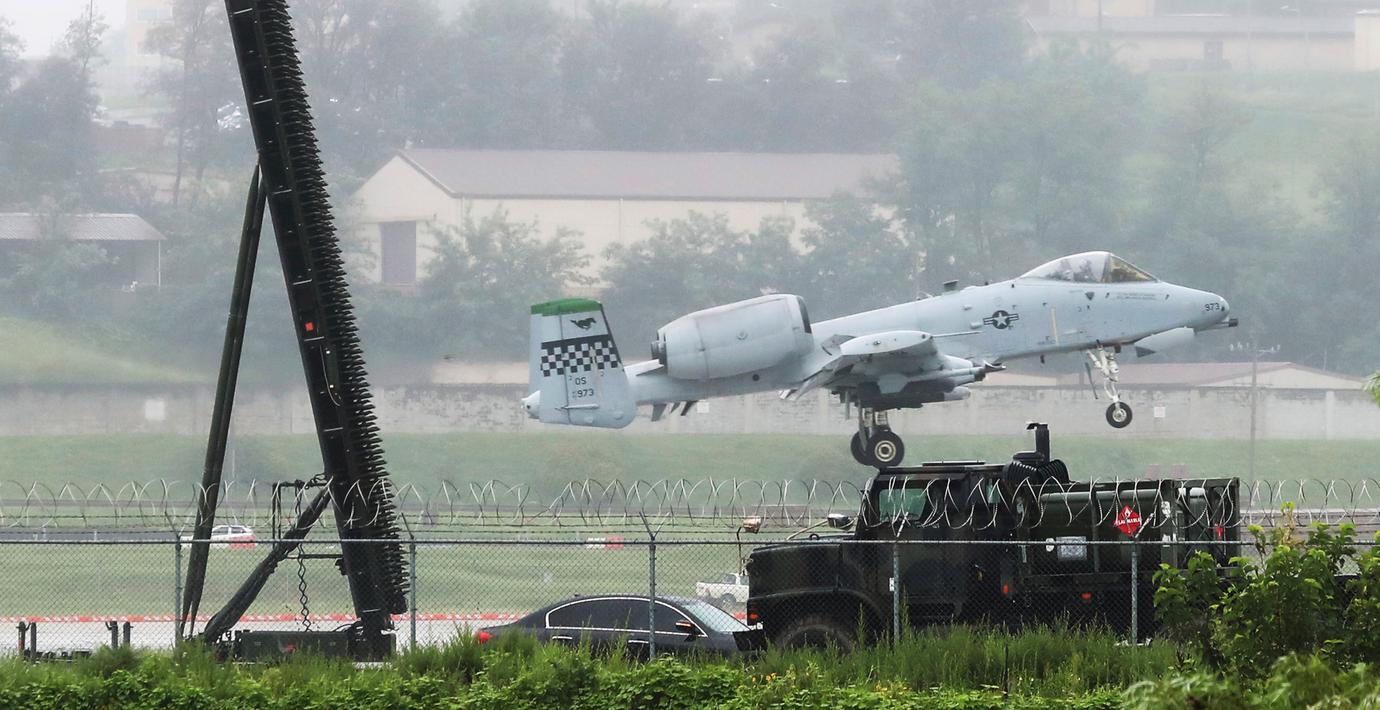
USA skickar fler flygplan till Mellanöstern
USA flyttar över 300 medlemmar av flygvapnet och flera flygplan till Mellanöstern. Det rapporterar den amerikanska försvarstidningen Task and Purpose.
Truppförflyttningen anses vara en del av en kraftig utbyggnad av de amerikanska styrkorna i området.
Flygplanen ska vara av typen ”Thunderbolt II”, mer kända som ”Warthog”. De har under vintern vid flera tillfällen använts vid amerikanska attacker mot IS i Irak och Syrien.
bakgrund
Thunderbolt II
Wikipedia (en)
The Fairchild Republic A-10 Thunderbolt II is a single-seat, twin-turbofan, straight-wing, subsonic attack aircraft developed by Fairchild Republic for the United States Air Force (USAF). In service since 1977, it is named after the Republic P-47 Thunderbolt, but is commonly referred to as the "Warthog" or simply "Hog". The A-10 was designed to provide close air support (CAS) to ground troops by attacking enemy armored vehicles, tanks, and other ground forces; it is the only production-built aircraft designed solely for CAS to have served with the U.S. Air Force. Its secondary mission is to direct other aircraft in attacks on ground targets, a role called forward air controller (FAC)-airborne; aircraft used primarily in this role are designated OA-10.
The A-10 was intended to improve on the performance and firepower of the Douglas A-1 Skyraider. The Thunderbolt II's airframe was designed around the high-power 30 mm GAU-8 Avenger rotary autocannon. The airframe was designed for durability, with measures such as 1,200 pounds (540 kg) of titanium armor to protect the cockpit and aircraft systems, enabling it to absorb damage and continue flying. Its ability to take off and land from relatively short and/or unpaved runways permits operation from airstrips close to the front lines, and its simple design enables maintenance with minimal facilities.
It served in the Gulf War (Operation Desert Storm), the American-led intervention against Iraq's invasion of Kuwait, where the aircraft distinguished itself. The A-10 also participated in other conflicts such as the Balkans, Afghanistan, the Iraq War, and against the Islamic State in the Middle East.
The A-10A single-seat variant was the only version produced, though one pre-production airframe was modified into the YA-10B twin-seat prototype to test an all-weather night-capable version. In 2005, a program was started to upgrade the remaining A-10A aircraft to the A-10C configuration, with modern avionics for use with precision weaponry. The U.S. Air Force had stated the Lockheed Martin F-35 Lightning II would replace the A-10 as it entered service, but this remains highly contentious within the USAF and in political circles. The USAF gained congressional permission to start retiring A-10s in 2023, but further retirements were paused until the USAF can demonstrate that the A-10's close-air-support capabilities can be replaced.
Omni är politiskt obundna och oberoende. Vi strävar efter att ge fler perspektiv på nyheterna. Har du frågor eller synpunkter kring vår rapportering? Kontakta redaktionen



